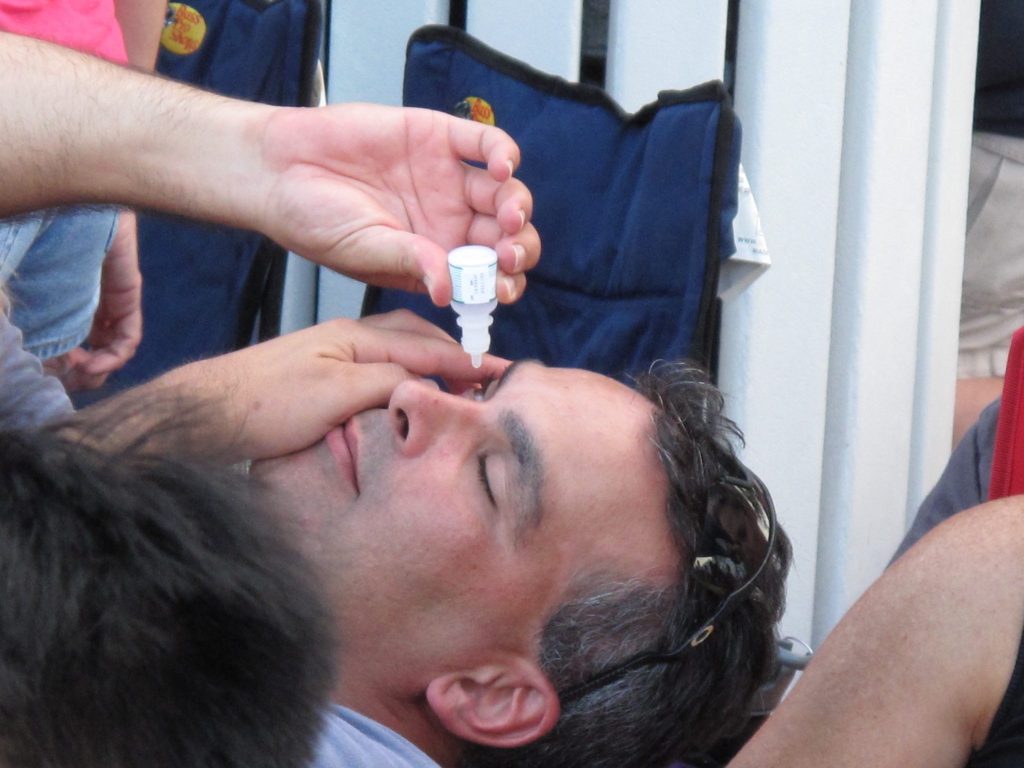With a name like “dry eyes,” it’s common to think
That the condition is simply caused by a lack of tears. That is only partially true. Dry eyes (or keratoconjunctivitis sicca) is a condition whereby the tears produced are either inadequate in quality or quantity.

Other causes can include eyelid issues such as ectropion (an out-turning of the lid) or entropion (an in-turning), medication, or the environment. Having dry eyes is a concern because when the eyes are functioning properly, tears keep the surface smooth, clear, and free of infection.
People are more prone to dry eyes when they are:
1.- Over the age of 50 as tear production may decrease as we age.
2.- Postmenopausal women.
3.- Past laser eye surgery recipients (although this is usually temporary, check with your eye doctor).
4.- Patients with other medical conditions such as a vitamin A deficiency, diabetes, thyroid disorders, lupus, rheumatoid arthritis, Sjogren’s syndrome.
5. People with damaged tear glands usually due to inflammation or radiation.
6.- Taking pain relievers containing ibuprofen and naproxen or other medications such as birth control pills, antidepressants, antihistamines, and decongestants as well as diuretic and high blood pressure prescriptions. Patients who are taking isotretinoin-type drugs for acne may also experience dry eyes and eye problems.
We all know that tears are produced by the eye when a person experiences certain emotions or physical pain and discomfort. They are salty to the touch and clear in appearance, but do you know what makes up your tears? They are a mixture of water, proteins, electrolytes, and fatty oils. Then, a tear film is formed and made up of three components: oil, water, and mucus.
Blinking is what allows the film to spread across the eyeball and keep it moisturized.
Oil – The meibomian glands produce this substance which contains fatty oils known as lipids. Oil makes up the outer layer of the tear and allows for slow evaporation while keeping the eye properly moisturized for long periods of time. If your eye is not able to produce enough oil, the water will evaporate too rapidly, causing dry eyes. This occurs when the meibomian glands are clogged, skin disorders are present or there is inflammation along the eyelids.
Water – This fills the middle and is made by the lacrimal glands which produced tears. With a pinch of salt, the water washes away foreign particles, cleansing the eye. Should your eye fail to produce sufficient amounts of water, then the other components are left to produce a mucusy discharge, creating more eye problems.
Mucus – Making up the inner tear layer, mucus allows the tears to be spread over the eyeball evenly. If there is not enough mucus, dry spots can form.
Dry eyes can be uncomfortable, causing a stinging or burning sensation. It can be further irritated by windy conditions, at high altitudes, in rooms with air conditioning, or sitting in front of a computer or television for hours on end.
Symptoms include the following eye problems:
• Itchy, stinging, or burning eyes (one or both).
• Increased eye irritability to smoke or wind.
• Light sensitivity.
• Mucus in or around the eye.
• Increased eye fatigue.
• Uncomfortable contact lenses.
• Excessive tears throughout the day.
• Poor vision as the day progresses.
If you experience one or more of these symptoms for an ongoing period of time, see your eye doctor. Treatment for dry eyes includes a series of over the counter lubricating eye drops and possible lifestyle changes including a diet rich in vitamin A from carrots, broccoli, and liver as well as fatty omega-3s found in vegetable oils, walnuts, and fish.
Further treatment may include specialty contact lenses, a series of procedures or a prescription to treat your dry eyes as causes vary. As with any medication, be sure to follow the instructions from your eye doctor to full term. In drastic cases, surgery may be required for dry eye problems, in this case, research your eye doctor and the eye doctors’ recommendations.



